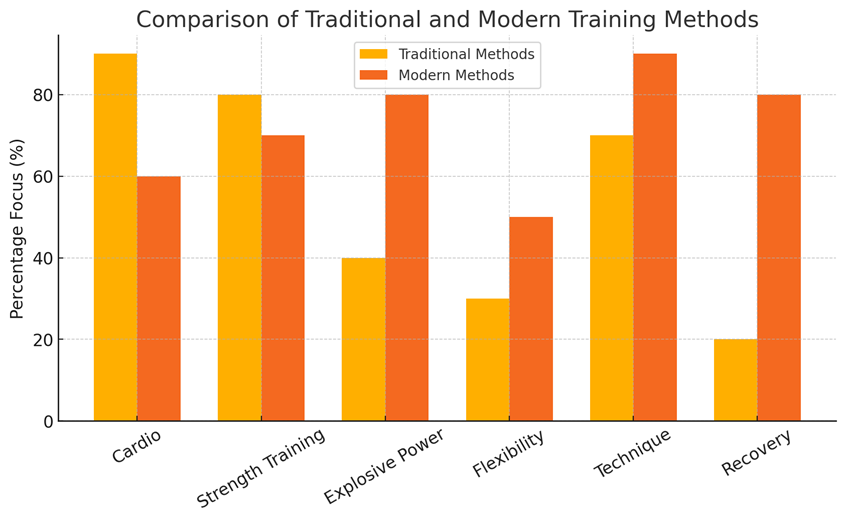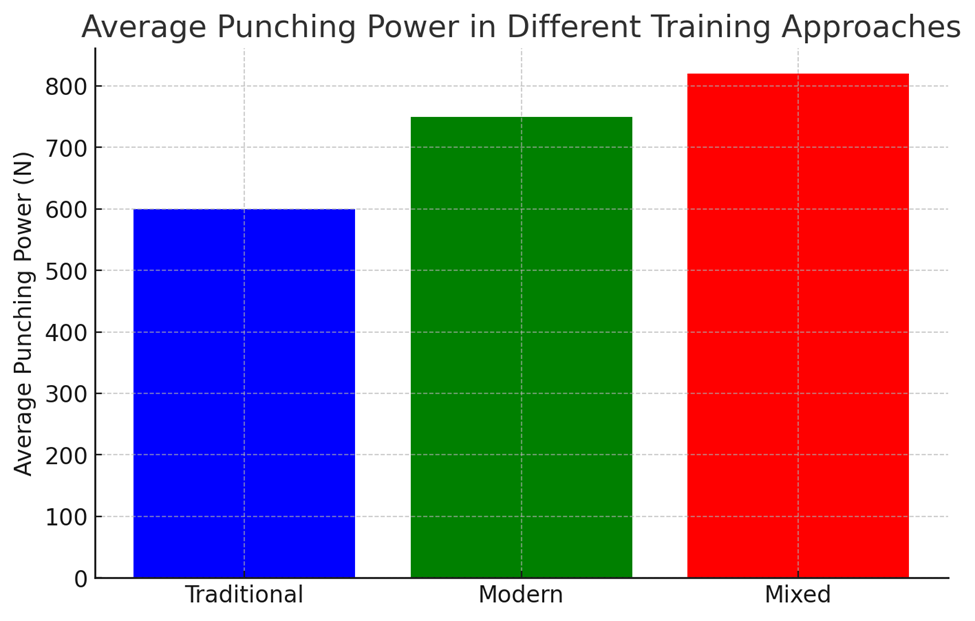Introduction
Boxing is a sport that requires the comprehensive development of the athlete's physical and tactical qualities. Unlike many other martial arts, a boxer must demonstrate not only the power of a blow, but also high endurance, coordination, reaction and strategic thinking. In this regard, the system of training fighters is constantly evolving, integrating both traditional, time-tested methods and the latest scientific approaches.
Historically, boxers pay great attention to physical training, since a fight in the ring is not only the art of conducting a duel, but also enormous stress on the body. The training process includes the development of aerobic and anaerobic endurance, muscle strength, flexibility, speed of movement, as well as psychological stability.
The development of sports science has made it possible to significantly change the approach to training. If earlier training was based mainly on intuitive methods and the experience of coaches, then in modern boxing biomechanical analysis of movements, pulse control, recovery monitoring, sports nutrition and neurophysiological methods are used. All this allows you to more accurately adapt training to the individual characteristics of the athlete, increasing their effectiveness and reducing the risk of injury. This article is devoted to the comparison of old and new schools of training boxers, the analysis of modern training methods and their differences, as well as the search for the most effective ways to optimize the training process to achieve maximum athletic results.
Traditional boxing training schools
Traditional methods of training boxers, which developed in the first half of the 20th century, were based on high volumes of physical exercise aimed at developing overall endurance, strength and coordination. The basic principle was that success in the ring was determined by the number of repetitions, heavy loads and extensive competitive practice.
One of the key elements of the old school was long endurance runs. Boxers covered 10 to 15 kilometers daily, which contributed to the development of an aerobic base and improved overall cardiovascular fitness. However, this approach did not take into account the specifics of energy expenditure in boxing, where short-term intense loads are important, rather than uniform running.
Working with a bag and a punching bag also occupied a central place in the training process. The main emphasis was on repeating punches and developing their power. However, without due attention to technique, this often led to a deterioration in coordination of movements and the consolidation of incorrect punching patterns. Strength training was based on classic exercises with dumbbells and a barbell: bench press, squats, deadlift. This allowed for the development of general muscle strength, but did not sufficiently develop explosive power, which is so necessary in boxing.
Sparring in the traditional school was considered the most important element of training. They were conducted with high intensity and often without a clear plan. The main goal was "survival" in the ring, which helped fighters develop a fighting spirit, but at the same time increased the risk of injury.
Despite certain shortcomings, the traditional method allowed many legendary champions to grow up. However, with the development of science, it became obvious that outdated methods require adjustment and adaptation to modern sports realities.
Modern approaches to boxing training
Modern boxing training has become more scientifically based and structured. Unlike the traditional school, where the volume and intensity of the load were considered the main factors of success, modern methods focus on the quality of training, individualization of loads and the use of the latest technologies.
One of the key changes was the introduction of periodization - a scientific approach to load distribution. Now training is based on the principle of cycling: athletes alternate periods of high load with recovery phases. This helps to avoid overtraining and improve the body's adaptation.
Instead of long runs, interval training (HIIT) is used today. These are series of short but intense sprints, repeated with minimal breaks. This approach allows you to develop anaerobic endurance, which is necessary for a dynamic fight.
Modern methods also focus on the development of explosive strength. Instead of a heavy classic barbell, boxers perform plyometric exercises: jumps, sharp lunges, medicine ball throws, work with rubber bands. This helps develop punching power without extra muscle mass.
Data analysis and sports technology play an important role. Many fighters use heart rate monitors, motion sensors, and special programs to analyze their technique. For example, biomechanical sensors help correct punching errors, while VR simulators improve reaction and tactical thinking.

Fig. 1
Mental preparation and its impact on a boxer’s physical fitness
Mental preparation plays a key role in boxing, since even with excellent physical fitness, insufficient resistance to stress can be a decisive factor in a fight. Modern training includes working with psychologists, developing concentration and mental visualization. For example, the “mental sparring” technique allows a fighter to imagine a fight with an opponent, analyzing his movements and developing tactics. This method helps improve reaction and increase confidence in the ring. In the old school of boxing, less attention was paid to psychological preparation, and fighters were tempered through tough sparring, which sometimes led to excessive nervous tension and loss of control in a fight.
One of the modern approaches is working with breathing practices and meditation. Breath control not only helps to combat fear before a fight, but also increases endurance. Boxers use methods borrowed from yoga and martial arts to maintain low stress levels and restore strength between rounds. Mindfulness techniques also allow you to better analyze the situation in the ring and make more informed decisions. The use of such techniques is especially effective in combination with physical training, as it improves the overall coordination and reaction speed of the athlete. In addition, an important element of psychological preparation is working with emotions and fight strategy. In modern methods, boxers learn to manage their emotional state, control aggression and stay cool at critical moments of the fight. For example, special cognitive-behavioral training helps fighters get rid of the fear of defeat and develop psychological stability. The use of tactical analysis of fights and studying the styles of opponents allows you to adapt to various situations in the ring. Thus, the combination of physical and psychological training creates a more versatile fighter, capable of effectively using his physical capabilities in stressful conditions of a fight.
Optimization of the training process
To achieve maximum training efficiency, it is important to consider the balance between load and recovery. Modern boxers use specialized recovery methods: cryotherapy, massage, contrast showers, as well as scientifically based sports nutrition to improve muscle regeneration.
An individual approach to training plays a key role. Each athlete is given optimal training loads taking into account their physical characteristics, level of training and fighting style. For example, punching boxers focus on strength training, while counterpunchers develop reaction speed and coordination.
Using a multidisciplinary approach also helps improve results. Boxers train with general physical training coaches, nutritionists, sports doctors, which allows taking into account all aspects of training.

Fig. 2
Conclusion
Physical training of boxers has come a long way from traditional methods to modern scientifically based approaches. Old schools based on high loads and repetitions have given the world many champions, but modern methods allow achieving better results due to the optimal distribution of forces and an individual approach.
Scientific progress has made important adjustments to the training system: the introduction of periodization, the use of sports technologies, the development of functional training and proper recovery have made training more effective and safe.
Thus, the future of boxing training lies in the proper synthesis of traditional methods and advanced scientific achievements, which will allow new generations of athletes to achieve the highest results in the ring.

.png&w=640&q=75)